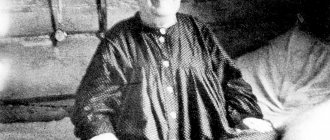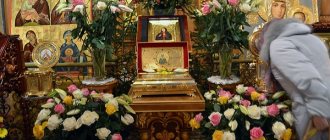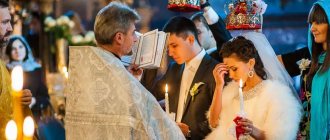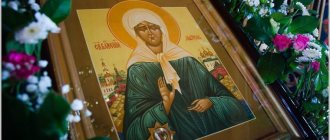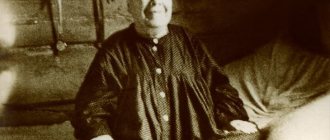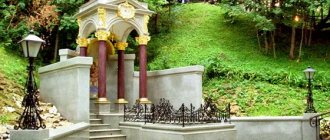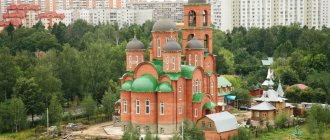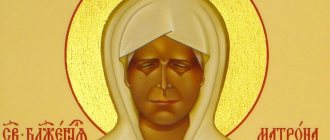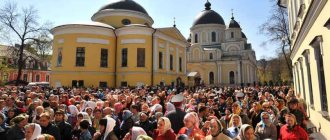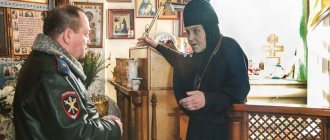According to historians, people lived on the territory of the current village of Sebino, Tula region, six centuries ago. It is located 20 kilometers from Kulikovo Field, and, of course, its residents connect the history of their small homeland with the battle of 1380. According to legend, on the site of present-day Sebino, Dmitry Donskoy’s council with the princes took place, at which it was decided to fight on the first battlefield of Russia. But the village became world famous due to an event that happened here in 1881 - the birth of a blind girl, Matronushka, who was subsequently destined to demonstrate unprecedented strength of spirit and Orthodox faith. For several years, in the homeland of Blessed Elder Matrona, a tourist complex with a cultural, historical and pilgrimage focus has been created using funds from philanthropists. On the eve of the 20th anniversary of the canonization of the blessed old lady, we visited her homeland.
Sebino village, Kimovsky district, Tula region
Sights of the village of Sebino
If 10 years ago we barely found the village of Sebino, today getting here is not difficult at all - an excellent road and signs everywhere.
Compared to the surrounding roads, the village is well-maintained, there are signs
Don’t miss the turn onto the road to Sebino either; as soon as you see a small chapel with the Matronushka icon, it means it’s time to turn off the main road. Many people begin their visit to Matronushka’s homeland by laying flowers here.
If earlier at the entrance to the village we immediately saw the snow-white Assumption Church in the shadow of old apple trees, today the traveler’s eyes literally run wild in the hope of grasping the full scale of the changes that have occurred here in a short time.
Matronushka in stone
There are two monuments to Matrona on the territory of Sebino. One of them is installed at the entrance to the village - “Matronushka Greeting” by architect Pyotr Dobaev. On the days of pilgrims' arrival, they are always buried in flowers.
Monument to Matrona of Moscow (Sebinskaya), where she meets and sees off guests
“This is a sculpture 3 meters 15 cm high, the sight of which gives the impression that the holy old woman reigns over the transformed space,” said the first deputy general director of the Tula Association “Historical, Local Lore and Art Museum”, art critic, member of the Union of Artists of Russia, Honored Cultural Worker RF Marina Kuzina.
The second monument to Matrona is on the site where the house in which the Saint lived stood
The story of the creation of another monument to the blessed old lady is dramatic, erected on the site where, according to legend, the house of the Nikonovs, Matrona’s parents, stood. This sculpture was the last work of the famous Tula sculptor Igor Kotenev.
“Igor Kotenev was my student, I taught him art history at the art school in Tula,” continues Marina Nikolaevna. – He graduated from the Penza Art School with a degree in Sculpture, then from the Moscow Higher Art and Industrial School (formerly Stroganov School) with a degree in Monumental Sculpture. He was a student of the famous master of Russian sculpture A. N. Burganov. After studying, Igor Leonidovich returned to Tula, taught at the Tula Polytechnic University, and when he learned about Sebino, he wanted there to be a monument to Matronushka. And the very first solution for the monument that he proposed to me was, in my opinion, very successful. I suggested that Igor look for money to implement the plan, but the sudden death of the sculptor shocked us all. Philanthropist Nikolai Sharaponov helped bring Igor’s plan to life. Nikolai Anatolyevich found the sculptor Alexei Ignatov in Moscow, who, based on Igor Kotenev’s sketch, created a monument to Matronushka.
Countrywoman and contemporary of Matrona Sebinskaya of Moscow
Next to the monument there is a sign with an inscription stating that, according to legend, the blessed old woman lived here.
“When construction of the complex began in Sebino, the oldest resident of the village, Anna Nikulina, was still alive; she was 93 years old at that time,” says Tamara Pisareva, head of the Matrona Sebinskaya-Moscow Museum. “She showed us the place where the Nikonovs’ house was located. But Anna Ivanovna did not remember Matronushka herself. When Matrona left Sebino, Anna Nikulina was five years old. And two years ago Anna Ivanovna died...
Today, from the place where the Nikonovs’ house was probably located, an alley leads to the temple.
The place where Matrona's house was located
Matronushkin Temple
Information about the Church of the Dormition of the Blessed Virgin Mary, which Blessed Matrona visited, was found on the official website of the Holy Dormition Church in the village of Sebino. I found out that the temple was erected at the expense of Sebinsk landowner Evgenia Vasilievna Yankova. In 1881, the refectory church was built in rough form. The interior decoration of the temple lasted 6 years. In March 1887, Archbishop Nikandr blessed the parishioners to install a side altar at the meal in the name of the Holy Blessed Prince Alexander Nevsky. On December 2, 1892, the new altar was consecrated by local dean Sergei Druzhinin and parish priest Vasily Troitsky.
– The temple in Sebino was closed from 1937 to 1947. At that time, Matrona no longer lived here,” says Tamara Pisareva, head of the Matrona Sebinskaya-Moscow Museum.
Church of the Assumption of the Blessed Virgin Mary. Summer 2021
Christian sources
Believers understand that drinking consecrated water is comparable to hearing the Word of God. There is a similar source on the territory of the village; it gives people healing and deliverance from ignorant worldviews.
- At some distance from the museum, believers can find consecrated fonts where they are allowed to take a dip. These buildings are closed and appear as wooden buildings with changing rooms and several main departments.
- The fonts are filled with water from an underground spring flowing at a depth of four meters. A white stone rotunda was built over this spring, the dome of which is crowned with an Orthodox gilded cross.
- On the outer walls of the fonts, pilgrims see photographs of the Church of the Assumption of the Blessed Virgin and the Matrona of Moscow herself. There are also notes with the instructions of the venerable old woman and the rules for washing in holy water.
In Sebino, a font and a spring were consecrated in honor of the Holy Blessed Matrona
Since the time of Matrona
“Despite the fact that grain was stored in the temple during the years of its closure, its iconostasis, silver and gilded, survived,” the rector of the Assumption Church, Father Alexy Lysikov, gives us a short tour.
Today in the Assumption Church there are three chapels: the Dormition of the Mother of God, the Holy Blessed Prince Alexander Nevsky and the Blessed Matrona.
Father Alexy shows the font in which, according to legend, Matronushka was baptized. Today it is constantly located in the chapel of St. Matrona, and infants are still baptized there on Saturdays. There is also an icon of the blessed old woman with a particle of her relics.
The font in which, according to legend, Matronushka was baptized. Babies are still baptized there
The oldest worker of the Assumption Church, Raisa Feodorovna, shows the place where Matronushka stood in the temple - right behind the temple doors, on the left.
Since the time of Matrona, a number of icons from the chapel of Alexander Nevsky have been preserved in the village church.
Raisa Feodorovna also told about other temple shrines from the time of Matronushka.
Among them is an ancient icon of the Mother of God “Joy of All Who Sorrow.” The inscription on the icon read: “This icon was sacrificed by a warrior of the trees. Zhurishok Fedot Kiselev."
“The peasant Kiselev lived in the village of Zhurishki, and he had seven sons,” Raisa Fedorovna tells the story of the appearance of the icon in the temple. “And then they gave land for each boy.” And when they wanted to take the eldest son to serve (and the events took place immediately after the abolition of serfdom), the father, seeing in him an indispensable assistant in the household, decided to send his youngest son to serve instead of the eldest. Fedot was saddened, but did not contradict his father. And he made a vow that if he served safely, he would order an icon, which was done. And today, a descendant of this donor came to the temple to get acquainted, as he explained, with his ancestral icon.
Assumption Church Sebino. Father Alexy Lysikov
Assumption Church Sebino is open daily. Opening hours: from 8:00 to 20:00. Font from 9:00 to 17:00. The rector is Priest Alexy Lysikov.
Another icon of the holy noble prince Alexander Nevsky was donated to the temple of the village of Sebino in memory of the abolition of serfdom, and the inscription on the icon read: “This icon was donated by the Zhurishan society in memory of the liberation of peasants from serfdom in 1861 on February 19 by the late Sovereign Emperor Alexander Nikolaevich."
The icon “Seeking the Lost” is also kept in the Church of the Assumption of the Blessed Virgin Mary, but this is a copy of the image painted by order of Matronushka. The original is now in the Holy Dormition Monastery in the city of Novomoskovsk, Tula region.
The author and compiler of the book “The Life and Miracles of the Blessed Elder Matrona” Zinaida Vladimirovna Zhdanova bequeathed one of her icons of Jesus Christ to be transferred after her death to the Assumption Church in the village of Sebino, which was done.
On the territory of the Holy Dormition Church there is a monument to the priest Father Vasily Troitsky, who baptized Matronushka.
“Many people mistakenly believe that this is the priest’s grave, but this is a monument,” explained Raisa Fedorovna.
“Services in our church are held on Saturdays, Sundays and holidays,” says Father Alexy. – At 7:45 a.m. Confession begins, and immediately after its end the reading of the hours begins. On days of services, up to 200 people gather in the church, and on days of memory of St. Matrona - even more.
From the history of Sebino
The village is located in the Tula region and belongs to the Kimovsky district. Once upon a time this was probably a real bear corner, which is reflected in the name: Staro-Medvezhevo. The settlement received a certain status by becoming the property of the governor. But its original owner was Tatar Sobina. This is apparently where the modern name came from.
It has long basked in the rays of Russia’s historical glory: approximately 20 km separates it from the famous field where the Battle of Kulikovo took place. The Holy Assumption Church, according to legend, was founded exactly where the convoys and the camp of Dmitry Donskoy’s soldiers were located. And there he discussed the upcoming battle with the army.
At first wooden, in the landmark 1881 the church was rebuilt in a reliable stone version. And in November of the same year, a blind girl Matrona was born into the large poor Nikonov family.
Read a detailed article on the topic: “The Life of Matrona of Moscow: the story of the Holy Mother.”
This is the year her life calls:
According to various sources, there are other dates (1883 and 1885), but all documents unanimously call Sebino the place of her birth.
Also, all sources claim that this temple was little Matrosha’s favorite place. When the mother did not know where to look for her daughter, she came to the Assumption Church and often found the child on the left behind the temple doors.
How to get a job with Matronushka?
Of course, in the course of communicating with my new acquaintances, I wanted to find out how people get to Sebino and stay here for a long time?
Father Alexy graduated from the Tula Theological Seminary and has already been working as a priest for 9 years. Before that, he was rector of a parish in the city of Uzlovaya, Tula region.
“The news of my appointment to the temple of the village of Sebino arrived suddenly, and it happened on the day of the icon of the Mother of God “Unexpected Joy.” Four years have already passed since then.
- What is it like, father, to serve in the temple that Matrona visited?
“It’s a blessing to work in this place,” Father Alexy answers briefly.
Matrona in Moscow in the 20-30s of the 20th century
The oldest worker of the temple, Raisa Fedorovna, shared that she was born in 1934 in Ukraine, but her whole life was spent on Tula land, in the city of Uzlovaya.
– I graduated from school here, and graduated from college in Moscow. Then she worked in clothing factories as chief engineer for 40 years. And now I’m 84 years old,” Raisa Fedorovna, who looks much younger than her age, surprises me.
– How did you become Sebinskaya? – I’m interested.
– When my son died, I sought consolation in my grief and asked to go to the Matronushka Church to work. Then Father Igor Goroshko was the rector, and the priest allowed me to stay here, 13 years have passed since then,” said Raisa Fedorovna.
My interlocutor showed me her “cell” in the temple gatehouse, where I saw a small sofa, and on the wall - photographs of the elders revered by Raisa Fedorovna - Archimandrites Kirill (Pavlov) and John (Krestyankin).
“Father instructed me to perform the duties of a catechist,” we continue to talk with Raisa Feodorovna, “and to tell about our church to those who are interested in its history.
“Amazing events happen here every day”
– Do you keep a chronicle of the miracles that happen in Sebino through the prayers of Matronushka? - I ask Raisa Fedorovna.
“Amazing events happen here every day,” my interlocutor shares. “We don’t even write them down anymore.” But some things are remembered for a long time.
– Tell us, Raisa Fedorovna! - I ask.
– Although I live and work in Matronushka’s homeland, my icons were all simple, made of paper, but I wanted a silver one. One day a young man comes to visit us in Sebino, enters the church, and as usual, I give him flowers from Matronushka. And he was so happy, as if I had poured gold on him. He comes up to me later and says: “I want to give you a silver icon of Matronushka!” And he gives me a small icon.
Or this happened to me recently. I enter the temple, and a man comes towards me and greets me as if he were a person well known to him. I tell the man that I don't remember him. And he tells me the following - that he and his wife prayed in our church for the birth of a second child: “And at that time you passed by us and told us not to be upset, to go home, and that we would have a girl. And so, we came to Sebino to baptize our daughter and thank you!”
How to get to Sebino
- You can get to the village by public transport from Tula, Kimovsk, Novomoskovsk. Before the pandemic, routes from these cities to Sebin were regular, from morning to evening. Now their schedule needs to be clarified.
- Getting there with your own vehicle is even easier. There is a good road with signs, and the distance is only 124 km from Tula. First you can get to the small town of Epifan. From it - about 25 km in the direction of Monastyrshchino until the turn to Sebino: in this place there is a sign and a chapel with an icon of Matrona.
- You can come to Sebino from Mokhovoy, where the memorial to the Battle of Kulikovo is located. In the direction of Epifani - the same 25-25 km . After the first turn to the left, towards Monastyrshchino, the next right turn will lead to Sebino.
The font in Sebino
Blessed Matrona is the last saint of the Russian land. And a shining example of God in the soul without any allowance for circumstances. Hegumen Agafangel said about her: “...Holy Matrona sets an example for us all - no matter where and in what conditions a person lives, whether he is completely healthy or has congenital ailments, he can glorify God with his whole life.”
That is why domestic and foreign pilgrims honor her small homeland. That is why miracles still happen here...
From letters to Matrona
Over the five and a half years of operation of the museum, the demand for the so-called A book of communication, in which hundreds of people write requests addressed to Matronushka, gratitude. When they come again, they find their notes and write more. The fifth book, begun in mid-December, is also actively filled with words that are stunning in their faith and sincerity.
Books of communication, in which hundreds of people write requests addressed to Matronushka, gratitude
A detailed chronicle of the miracles that took place through the prayers of Matrona is kept by the staff of the Matrona Sebinskaya-Moscow Museum in the so-called books of communication, in which museum visitors themselves talk about the help of the saint... and write letters to her:
- “Thanks to Blessed Matrona, we have a long-awaited baby. Today in Matronushka’s church we baptized our son in her font...”
- “Mati Matronushka, thank you for your help in my treatment for oncology, I am slowly coming to my senses.”
There are also touching children’s appeals to the saint:
- “Thank you, Matronushka, that I am a Suvorovite.”
- “Dear Matronushka, I love you very much and congratulate you on your holiday! Thank you very much for the fact that I graduated from the second grade with a certificate of merit.”
I was surprised to note that visitors communicate with the saint in such an unusual form for Orthodox Christians - in letters written in a notebook in the museum:
- “Thanks to Matronushka: we asked for money to buy a car, and she gave us the lottery winnings. The amount is very large. Just enough for a new car. We thank and praise you, Matronushka. We bow low."
- “Holy Matronushka, hear my pain, create a miracle, help my lost son, show the bright path”...
Shrines[edit]
- Icon with a particle of the relics of the blessed Matrona of Moscow, donated by His Holiness Patriarch Alexy II;
- the reliquary with the relics of the forty Sebastian martyrs, St. Gregory the Theologian, St. Hilarion the Great, St. Gerasim of Boldinsky, St. Alexandra of Diveevskaya, Kinoviarch of Jerusalem Theodosius the Great, Righteous Christina of Greece, Christ for the sake of the Fool for the Fool John of Tula, the Wonderworker;
- a piece of the coffin of the blessed Matrona of Moscow;
- holy spring located on the banks of the Mokraya Tabola River.
Museum
The Museum of Matrona Sebinskaya-Moscow in the village of Sebino is open every day from 9 a.m. to 5 p.m., with one day off—Tuesday.
Several years ago this house was recreated and a museum was opened in it.
The village history repository was consecrated on May 2, 2014, on the 15th anniversary of the canonization of Blessed Elder Matrona.
“The goal of our museum is to tell about the life of Matronushka,” says Tamara Konstantinovna. – Here you can watch films about Matronushka, get acquainted with her life, and, of course, study documents.
The Matrona Museum displays copies of records from the Revizskaya tale of 1858, discovered in the State Archives of the Tula Region. Thus, in the Revizskaya Tale of the peasants of the Epifanovsky district in 1858, in the village of Sebino, we find information about the Nikonov family, which included the nine-year-old boy Dmitry, the future father of Matrona.
Entry in the 1869 registry book about the wedding of Matrona’s parents
And in the Revizskaya tale of 1858 in the village of Yakovlevka, Epifansky district, there is a mention of the Efimov family and the 6-year-old girl Natalya, the future mother of Matronushka.
In a copy of the 1869 registry book, you can read a record of the wedding of Matrona’s future parents - 20-year-old Dmitry and 18-year-old Natalya - on October 26, 1869 - and that they were married by priest Vasily Troitsky. It is known that Father Vasily baptized Matronushka.
“Our guests sometimes spend up to five hours studying documents, so we have a magnifying glass ready, and if there are not many visitors, we treat our guests to tea,” notes Tamara Konstantinovna.
In the Matrona Museum
The museum presents the geneological tree of the Matronushka-Nikonov family.
– As you know, Dmitry and Natalya had 8 children. Matrona was the sixth child. Four children died in infancy. Older than Matrona was sister Pelageya (born 1873). Ivan (born 1885) and Mikhail (born 1888) are Matrona’s younger brothers. They had families and children.
In our museum there are photos of the descendants of Matronushka Pelageya’s sister - Anna Dmitrievna and Igor Prokhorov. Among the relatives of Matrona's brother Ivan, our exhibition includes photographs of his wife Evdokia, daughter Anna, grandson Victor, great-granddaughter Victoria and great-great-granddaughter Polina, with whom our museum especially actively communicates.
Geneological tree of Matronushka
Of the five children of Matrona's younger brother Mikhail, you can see a photo of his son Dmitry and daughter Nadezhda. “These are all blood, close relatives of our Matronushka,” Tamara Konstantinovna concludes her story about Matrona’s genealogy.
The museum of the village of Sebino presents photo chronicles of Matronushka’s life in Sebino and Moscow.
In the Sebinsky period of the life of the holy old woman, you can see a photo of Father Vasily Troitsky and the local landowner Lydia Yankova, who took Matronushka to the holy places of Moscow, St. Petersburg and others.
“And this is how the holy righteous John of Kronstadt saw Matronushka,” Tamara Pisareva continues to introduce us to the museum’s exhibition. – Remember when Matronushka and Lydia went to Father John in Kronstadt, and after the service he asked the believers to make way, and then called: “Matronushka, come, come to me!” Here comes my shift – the eighth pillar of Russia.”
The museum's exhibition also includes several rare photographs of Matrona. Unfortunately, it is unknown who is on them next to Matrona.
“Photos sometimes come to our email simply with a note that they have Matronushka, and no more information is offered,” explains Tamara Konstantinovna.
The unique exhibits of the Sebino Museum also include a lantern from Matronushka’s grave. He was enshrined on the cross at Matronushkina’s grave, at the Danilovsky cemetery in Moscow. And a lamp was burning in it.
It is worth noting that the life of the blessed old woman is widely presented in the rural museum, against the backdrop of a story about the life and culture of the inhabitants of the Tula province.
Deputy General Director of the Tula Association “Historical, Local Lore and Art Museum” Marina Kuzina told me more about this component of the museum.
Icons in the Matrona Museum
– The beginning of the museum’s exhibition began with the acquisition of ancient icons. I was invited to one of the apartments in Tula to evaluate ancient icons. And the first thing I saw was the large and beautiful Kazan Icon of the Mother of God and other images. I told the owner of the apartment that a museum of Blessed Matrona was being created in Sebino, and we asked her to donate the icons to the museum. And imagine my surprise when the woman agreed! – says Marina Nikolaevna. “Then we really wanted an antique cabinet to appear in our new museum. And such a cabinet was found in the garage of a restorer friend of mine. Folk costumes, towels, chests were purchased by us or donated to the museum from the unique collection of folk art of the House of Culture of the city of Skopin. And when she returned with exhibits for the Sebino village museum, she told the driver that she would also like to purchase peasant household items for the Sebino museum: irons, rolling pins, and a sickle. And he tells me that he has such items in the attic of his village house! And so behind each exhibit, its receipt - whether it is an icon, a folk costume, towels, clothes, chests, lace - there is an amazing story of their acquisition.
– Are there any exhibits from the life of Sebino peasants in the museum’s collection? – I’m already interested in the owner of the museum, Tamara Konstantinovna.
“This forged steelyard and pitchfork are our dear ones, from Sebinsk.” Blacksmithing was developed in the village, says my interlocutor, but she particularly draws my attention to another exhibit:
“This towel, which is at least 200 years old, was brought to our museum by an 87-year-old woman and said that her great-grandmother gave it to her. She embroidered it herself, and her great-granddaughter knitted the lace for it: “Darlings, take this towel,” our visitor began to ask. “How I want Matronushka to have it!” So we got another exhibit,” Tamara Pisareva smiles.
Tamara Konstantinovna tells me the story of another memorial sign on the territory of Sebino - the Cross and the monument, the inscription on which reads: “This is the resting place of pious ancestors - residents of the God-saved village of Sebino.”
– There was a parish cemetery on this site, but no burials have been made there since 1945. And we don’t know for certain whether Matronushka’s relatives are buried here,” Tamara Konstantinovna makes clear.
Signs have been installed not far from the former cemetery; we head towards the font.
In the font of the village of Sebino, Tula region
– In 2016, we built a font for brothers and sisters and consecrated a source on our native Matronushkina River, which is called Mokraya Tabola. Matronushka’s teachings were placed on the walls of the font, and there is also an open font nearby,” said Tamara Pisareva.
– In 2016, we built a font for brothers and sisters and consecrated a source on our native Matronushkina River, which is called Mokraya Tabola. Matronushka’s teachings were placed on the walls of the font, and there is also an open font nearby,” said Tamara Pisareva.
At a meeting, the Minister of Culture of the Tula Region, Tatyana Rybkina, told me more about the history of the appearance of the font in Sebino.
Minister of Culture of the Tula Region Tatyana Rybkina
“There are no government programs or invested budget rubles, Sebino is a place that is developing on the initiative of people, their good thoughts, good deeds, inspiration, and, of course, the leaders of the region have always supported this project,” said Tatyana Vyacheslavovna. – Sebino became one of the first settlements that Alexey Dyumin visited immediately after his appointment as governor of the Tula region. This happened on one of Matronushka’s memory days, March 8th. Alexey Gennadievich attended a service in the Holy Dormition Church in the village of Sebino, and then discussed plans for the further development of this holy place with Bishop Alexy. It was decided to build a font here. The governor gave instructions, allocated funds, and so another memorable place, actively visited by pilgrims and tourists, appeared in Matronushka’s homeland.
Sebino - the birthplace of Blessed Matrona
According to historians, people lived on the territory of the current village of Sebino, Tula region, six centuries ago. It is located 20 kilometers from Kulikovo Field, and, of course, its residents connect the history of their small homeland with the battle of 1380. According to legend, on the site of present-day Sebino, Dmitry Donskoy’s council with the princes took place, at which it was decided to fight on the first battlefield of Russia. But the village became world famous due to an event that happened here in 1881 - the birth of a blind girl, Matronushka, who was subsequently destined to demonstrate unprecedented strength of spirit and Orthodox faith. For several years, in the homeland of Blessed Elder Matrona, a tourist complex with a cultural, historical and pilgrimage focus has been created using funds from philanthropists. On the eve of the 20th anniversary of the canonization of the blessed old lady, we visited her homeland.
It was - it became
If 10 years ago we barely found the village of Sebino, today getting here is not difficult at all - an excellent road and signs everywhere.
Don’t miss the turn onto the road to Sebino either; as soon as you see a small chapel with the Matronushka icon, it means it’s time to turn off the main road. Many people begin their visit to Matronushka’s homeland by laying flowers here.
If earlier at the entrance to the village we immediately saw the snow-white Assumption Church in the shadow of old apple trees, today the traveler’s eyes literally run wild in the hope of grasping the full scale of the changes that have occurred here in a short time.
Matronushka in stone
Monument to Matrona, made according to a sketch by Igor Kotenev. There are two monuments to Matrona on the territory of Sebino. One of them is installed at the entrance to the village - “Matronushka Greeting” by architect Pyotr Dobaev.
“This is a sculpture 3 meters 15 cm high, the sight of which gives the impression that the holy old woman reigns over the transformed space,” said the first deputy general director of the Tula Association “Historical, Local Lore and Art Museum”, art critic, member of the Union of Artists of Russia, Honored Cultural Worker RF Marina Kuzina.
The story of the creation of another monument to the blessed old lady is dramatic, erected on the site where, according to legend, the house of the Nikonovs, Matrona’s parents, stood. This sculpture was the last work of the famous Tula sculptor Igor Kotenev.
“Igor Kotenev was my student, I taught him art history at the art school in Tula,” continues Marina Nikolaevna. – He graduated from the Penza Art School with a degree in Sculpture, then from the Moscow Higher Art and Industrial School (formerly Stroganov School) with a degree in Monumental Sculpture. He was a student of the famous master of Russian sculpture A. N. Burganov. After studying, Igor Leonidovich returned to Tula, taught at the Tula Polytechnic University, and when he learned about Sebino, he wanted there to be a monument to Matronushka. And the very first solution for the monument that he proposed to me was, in my opinion, very successful. I suggested that Igor look for money to implement the plan, but the sudden death of the sculptor shocked us all. Philanthropist Nikolai Sharaponov helped bring Igor’s plan to life. Nikolai Anatolyevich found the sculptor Alexei Ignatov in Moscow, who, based on Igor Kotenev’s sketch, created a monument to Matronushka.
Anna Ivanovna Nikulina
Next to the monument there is a sign with an inscription stating that, according to legend, the blessed old woman lived here.
“When construction of the complex began in Sebino, the oldest resident of the village, Anna Nikulina, was still alive; she was 93 years old at that time,” says Tamara Pisareva, head of the Matrona Sebinskaya-Moscow Museum. “She showed us the place where the Nikonovs’ house was located. But Anna Ivanovna did not remember Matronushka herself. When Matrona left Sebino, Anna Nikulina was five years old. And two years ago Anna Ivanovna died...
Today, from the place where the Nikonovs’ house was probably located, an alley leads to the temple.
In Sebino
Matronushkin Temple
Information about the Church of the Dormition of the Blessed Virgin Mary, which Blessed Matrona visited, was found on the official website of the Holy Dormition Church in the village of Sebino. I found out that the temple was erected at the expense of Sebinsk landowner Evgenia Vasilievna Yankova. In 1881, the refectory church was built in rough form. The interior decoration of the temple lasted 6 years. In March 1887, Archbishop Nikandr blessed the parishioners to install a side altar at the meal in the name of the Holy Blessed Prince Alexander Nevsky. On December 2, 1892, the new altar was consecrated by local dean Sergei Druzhinin and parish priest Vasily Troitsky (https://sebino.ru/index.html).
– The temple in Sebino was closed from 1937 to 1947. At that time, Matrona no longer lived here,” says Tamara Pisareva, head of the Matrona Sebinskaya-Moscow Museum.
Church of the Assumption of the Blessed Virgin Mary. Summer 2021
Since the time of Matrona
“Despite the fact that grain was stored in the temple during the years of its closure, its iconostasis, silver and gilded, survived,” the rector of the Assumption Church, Father Alexy Lysikov, gives us a short tour.
Today in the Assumption Church there are three chapels: the Dormition of the Mother of God, the Holy Blessed Prince Alexander Nevsky and the Blessed Matrona.
Father Alexy shows the font in which, according to legend, Matronushka was baptized. Today it is constantly located in the chapel of St. Matrona, and infants are still baptized there on Saturdays. There is also an icon of the blessed old woman with a particle of her relics.
Font with the well of St. Matrona in Sebino
The font in which, according to legend, Matronushka was baptized. Babies are still baptized there
The oldest worker of the Assumption Church, Raisa Feodorovna, shows the place where Matronushka stood in the temple - right behind the temple doors, on the left.
Since the time of Matrona, a number of icons from the chapel of Alexander Nevsky have been preserved in the village church.
Raisa Feodorovna also told about other temple shrines from the time of Matronushka.
Among them is an ancient icon of the Mother of God “Joy of All Who Sorrow.” The inscription on the icon read: “This icon was sacrificed by a warrior of the trees. Zhurishok Fedot Kiselev."
“The peasant Kiselev lived in the village of Zhurishki, and he had seven sons,” Raisa Fedorovna tells the story of the appearance of the icon in the temple. “And then they gave land for each boy.” And when they wanted to take the eldest son to serve (and the events took place immediately after the abolition of serfdom), the father, seeing in him an indispensable assistant in the household, decided to send his youngest son to serve instead of the eldest. Fedot was saddened, but did not contradict his father. And he made a vow that if he served safely, he would order an icon, which was done. And today, a descendant of this donor came to the temple to get acquainted, as he explained, with his ancestral icon.
Father Alexy Lysikov
Another icon of the holy noble prince Alexander Nevsky was donated to the temple of the village of Sebino in memory of the abolition of serfdom, and the inscription on the icon read: “This icon was donated by the Zhurishan society in memory of the liberation of peasants from serfdom in 1861 on February 19 by the late Sovereign Emperor Alexander Nikolaevich."
The icon “Seeking the Lost” is also kept in the Church of the Assumption of the Blessed Virgin Mary, but this is a copy of the image painted by order of Matronushka. The original is now in the Holy Dormition Monastery in the city of Novomoskovsk, Tula region.
The author and compiler of the book “The Life and Miracles of the Blessed Elder Matrona” Zinaida Vladimirovna Zhdanova bequeathed one of her icons of Jesus Christ to be transferred after her death to the Assumption Church in the village of Sebino, which was done.
On the territory of the Holy Dormition Church there is a monument to the priest Father Vasily Troitsky, who baptized Matronushka.
“Many people mistakenly believe that this is the priest’s grave, but this is a monument,”
Raisa Fedorovna explained.
“Services in our church are held on Saturdays, Sundays and holidays,” says Father Alexy. – At 7:45 a.m. Confession begins, and immediately after its end the reading of the hours begins. On days of services, up to 200 people gather in the church, and on days of memory of St. Matrona - even more.
How to get a job with Matronushka?
Of course, in the course of communicating with my new acquaintances, I wanted to find out how people get to Sebino and stay here for a long time?
Father Alexy graduated from the Tula Theological Seminary and has already been working as a priest for 9 years. Before that, he was rector of a parish in the city of Uzlovaya, Tula region.
“The news of my appointment to the temple of the village of Sebino arrived suddenly, and it happened on the day of the icon of the Mother of God “Unexpected Joy.” Four years have already passed since then.
- What is it like, father, to serve in the temple that Matrona visited?
“It’s a blessing to work in this place,” Father Alexy answers briefly.
Matrona in Moscow in the 20-30s of the 20th century
The oldest worker of the temple, Raisa Fedorovna, shared that she was born in 1934 in Ukraine, but her whole life was spent on Tula land, in the city of Uzlovaya.
– I graduated from school here, and graduated from college in Moscow. Then she worked in clothing factories as chief engineer for 40 years. And now I’m 84 years old,” Raisa Fedorovna, who looks much younger than her age, surprises me.
– How did you become Sebinskaya? – I’m interested.
– When my son died, I sought consolation in my grief and asked to go to the Matronushka Church to work. Then Father Igor Goroshko was the rector, and the priest allowed me to stay here, 13 years have passed since then,” said Raisa Fedorovna.
My interlocutor showed me her “cell” in the temple gatehouse, where I saw a small sofa, and on the wall - photographs of the elders revered by Raisa Fedorovna - Archimandrites Kirill (Pavlov) and John (Krestyankin).
“Father instructed me to perform the duties of a catechist,” we continue to talk with Raisa Feodorovna, “and to tell about our church to those who are interested in its history.
“Amazing events happen here every day”
– Do you keep a chronicle of the miracles that happen in Sebino through the prayers of Matronushka? - I ask Raisa Fedorovna.
“Amazing events happen here every day,” my interlocutor shares. “We don’t even write them down anymore.” But some things are remembered for a long time.
– Tell us, Raisa Fedorovna! - I ask.
– Although I live and work in Matronushka’s homeland, my icons were all simple, made of paper, but I wanted a silver one. One day a young man comes to visit us in Sebino, enters the church, and as usual, I give him flowers from Matronushka. And he was so happy, as if I had poured gold on him. He comes up to me later and says: “I want to give you a silver icon of Matronushka!” And he gives me a small icon.
“We came to Sebino to baptize our daughter and thank you!”
Or this happened to me recently. I enter the temple, and a man comes towards me and greets me as if he were a person well known to him. I tell the man that I don't remember him. And he tells me the following - that he and his wife prayed in our church for the birth of a second child: “And at that time you passed by us and told us not to be upset, to go home, and that we would have a girl. And so, we came to Sebino to baptize our daughter and thank you!”
From letters to Matrona
Books of communication with Matrona in the museum
A detailed chronicle of the miracles that took place through the prayers of Matrona is kept by the staff of the Matrona Sebinskaya-Moscow Museum in the so-called books of communication, in which museum visitors themselves talk about the help of the saint... and write letters to her:
“Thanks to Blessed Matrona, we have a long-awaited baby. Today in Matronushka’s church we baptized our son in her font...”
“Mati Matronushka, thank you for your help in my treatment for oncology, I am slowly coming to my senses.”
There are also touching children’s appeals to the saint:
“Thank you, Matronushka, that I am a Suvorovite.”
“Dear Matronushka, I love you very much and congratulate you on your holiday! Thank you very much for the fact that I graduated from the second grade with a certificate of merit.”
I was surprised to note that visitors communicate with the saint in such an unusual form for Orthodox Christians - in letters written in a notebook in the museum:
“Thanks to Matronushka: we asked for money to buy a car, and she gave us the lottery winnings. The amount is very large. Just enough for a new car. We thank and praise you, Matronushka. We bow low."
“Holy Matronushka, hear my pain, create a miracle, help my lost son, show the bright path”...
Museum
Matrona Museum in the village of Sebino
The Museum of Matrona Sebinskaya-Moscow in the village of Sebino is open every day from 9 a.m. to 5 p.m., with one day off—Tuesday.
The village history repository was consecrated on May 2, 2014, on the 15th anniversary of the canonization of Blessed Elder Matrona.
“The goal of our museum is to tell about the life of Matronushka,” says Tamara Konstantinovna. – Here you can watch films about Matronushka, get acquainted with her life, and, of course, study documents.
The Matrona Museum displays copies of records from the Revizskaya tale of 1858, discovered in the State Archives of the Tula Region. Thus, in the Revizskaya Tale of the peasants of the Epifanovsky district in 1858, in the village of Sebino, we find information about the Nikonov family, which included the nine-year-old boy Dmitry, the future father of Matrona.
Entry in the 1869 registry book about the wedding of Matrona’s parents
And in the Revizskaya tale of 1858 in the village of Yakovlevka, Epifansky district, there is a mention of the Efimov family and the 6-year-old girl Natalya, the future mother of Matronushka.
In a copy of the 1869 registry book, you can read a record of the wedding of Matrona’s future parents - 20-year-old Dmitry and 18-year-old Natalya - on October 26, 1869 - and that they were married by priest Vasily Troitsky. It is known that Father Vasily baptized Matronushka.
“Our guests sometimes spend up to five hours studying documents, so we have a magnifying glass ready, and if there are not many visitors, we treat our guests to tea,” notes Tamara Konstantinovna.
In the Matrona Museum
The museum presents the geneological tree of the Matronushka-Nikonov family.
– As you know, Dmitry and Natalya had 8 children. Matrona was the sixth child. Four children died in infancy. Older than Matrona was sister Pelageya (born 1873). Ivan (born 1885) and Mikhail (born 1888) are Matrona’s younger brothers. They had families and children.
In our museum there are photos of the descendants of Matronushka Pelageya’s sister - Anna Dmitrievna and Igor Prokhorov. Among the relatives of Matrona's brother Ivan, our exhibition includes photographs of his wife Evdokia, daughter Anna, grandson Victor, great-granddaughter Victoria and great-great-granddaughter Polina, with whom our museum especially actively communicates.
Geneological tree of Matronushka
Of the five children of Matrona's younger brother Mikhail, you can see a photo of his son Dmitry and daughter Nadezhda. “These are all blood, close relatives of our Matronushka,” Tamara Konstantinovna concludes her story about Matrona’s genealogy.
The museum of the village of Sebino presents photo chronicles of Matronushka’s life in Sebino and Moscow.
In the Sebinsky period of the life of the holy old woman, you can see a photo of Father Vasily Troitsky and the local landowner Lydia Yankova, who took Matronushka to the holy places of Moscow, St. Petersburg and others.
The museum of the village of Sebino presents photo chronicles of Matronushka’s life in Sebino and Moscow
“And this is how the holy righteous John of Kronstadt saw Matronushka,” Tamara Pisareva continues to introduce us to the museum’s exhibition. – Remember when Matronushka and Lydia went to Father John in Kronstadt, and after the service he asked the believers to make way, and then called: “Matronushka, come, come to me!” Here comes my shift – the eighth pillar of Russia.”
The museum's exhibition also includes several rare photographs of Matrona. Unfortunately, it is unknown who is on them next to Matrona.
“Photos sometimes come to our email simply with a note that they have Matronushka, and no more information is offered,” explains Tamara Konstantinovna.
The unique exhibits of the Sebino Museum also include a lantern from Matronushka’s grave. He was enshrined on the cross at Matronushkina’s grave, at the Danilovsky cemetery in Moscow. And a lamp was burning in it.
It is worth noting that the life of the blessed old woman is widely presented in the rural museum, against the backdrop of a story about the life and culture of the inhabitants of the Tula province.
Deputy General Director of the Tula Association “Historical, Local Lore and Art Museum” Marina Kuzina told me more about this component of the museum.
Icons in the Matrona Museum
– The beginning of the museum’s exhibition began with the acquisition of ancient icons. I was invited to one of the apartments in Tula to evaluate ancient icons. And the first thing I saw was the large and beautiful Kazan Icon of the Mother of God and other images. I told the owner of the apartment that a museum of Blessed Matrona was being created in Sebino, and we asked her to donate the icons to the museum. And imagine my surprise when the woman agreed! – says Marina Nikolaevna. “Then we really wanted an antique cabinet to appear in our new museum. And such a cabinet was found in the garage of a restorer friend of mine. Folk costumes, towels, chests were purchased by us or donated to the museum from the unique collection of folk art of the House of Culture of the city of Skopin. And when she returned with exhibits for the Sebino village museum, she told the driver that she would also like to purchase peasant household items for the Sebino museum: irons, rolling pins, and a sickle. And he tells me that he has such items in the attic of his village house! And so behind each exhibit, its receipt - whether it is an icon, a folk costume, towels, clothes, chests, lace - there is an amazing story of their acquisition.
– Are there any exhibits from the life of Sebino peasants in the museum’s collection? – I’m already interested in the owner of the museum, Tamara Konstantinovna.
“This forged steelyard and pitchfork are our dear ones, from Sebinsk.” Blacksmithing was developed in the village, says my interlocutor, but she particularly draws my attention to another exhibit:
“This towel, which is at least 200 years old, was brought to our museum by an 87-year-old woman and said that her great-grandmother gave it to her. She embroidered it herself, and her great-granddaughter knitted the lace for it: “Darlings, take this towel,” our visitor began to ask. “How I want Matronushka to have it!” So we got another exhibit,” Tamara Pisareva smiles.
Font
In the font of the village of Sebino
Sebino is a place that develops on the initiative of people
Tamara Konstantinovna tells me the story of another memorial sign on the territory of Sebino - the Cross and the monument, the inscription on which reads: “This is the resting place of pious ancestors - residents of the God-saved village of Sebino.”
– There was a parish cemetery on this site, but no burials have been made there since 1945. And we don’t know for certain whether Matronushka’s relatives are buried here,” Tamara Konstantinovna makes clear.
Signs have been installed not far from the former cemetery; we head towards the font.
– In 2016, we built a font for brothers and sisters and consecrated a source on our native Matronushkina River, which is called Mokraya Tabola. Matronushka’s teachings were placed on the walls of the font, and there is also an open font nearby,” said Tamara Pisareva.
Minister of Culture of the Tula Region Tatyana Rybkina The Minister of Culture of the Tula Region Tatyana Rybkina told me more about the history of the appearance of the font in Sebino at a meeting.
“There are no government programs or invested budget rubles, Sebino is a place that is developing on the initiative of people, their good thoughts, good deeds, inspiration, and, of course, the leaders of the region have always supported this project,” said Tatyana Vyacheslavovna. – Sebino became one of the first settlements that Alexey Dyumin visited immediately after his appointment as governor of the Tula region. This happened on one of Matronushka’s memory days, March 8th. Alexey Gennadievich attended a service in the Holy Dormition Church in the village of Sebino, and then discussed plans for the further development of this holy place with Bishop Alexy. It was decided to build a font here. The governor gave instructions, allocated funds, and so another memorable place, actively visited by pilgrims and tourists, appeared in Matronushka’s homeland.
This is a poor village
For me, getting to know Matronushka’s homeland ends with a walk around the village. Seeing how poor, old and dilapidated his houses are, one might think that Sebino is ending his story. At the museum I learned that today only 17 people live in Sebino. Several people are employed in the Matrona Museum and the village temple.
But at the same time, there is active construction of new houses in the countryside.
“These are being built by summer residents who come here all year round, the land here, as you can see, is in demand, since we are recognized as a place of interest,” explained Tamara Konstantinovna. – And today people from all over the world come to Sebino. We recently had guests from Mexico, America, France, and Belgium.
So, through the prayers of Matronushka and thanks to the veneration of the blessed old woman by Orthodox Christians from all over the world, this small village from the Tula outback lives and develops.
